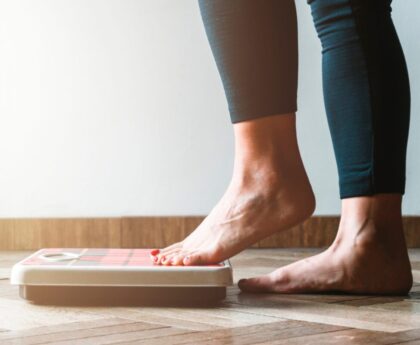A recent global study by Ipsos carried out across 30 countries found that 45% of people globally say they are currently trying to lose weight. According to the CDC, people who lose weight gradually and steadily (about 1 to 2 pounds per week) are more successful at keeping weight off. Using a weight loss app on your smartphone or laptop can help, giving you a convenient and reliable way to track your slow but steady progress. Here are some of the best weight loss apps to consider in 2023.
We learned two important things during testing. One, all of the apps can help you track your food intake and activity levels, and two, some apps are easier to use and update.
1. Noom – $60 per month (billed monthly) or $200 per year (billed annually) at Noom
Noom offers one-on-one coaching, support groups facilitated by a group coach and daily lessons. Noom’s daily lessons were intended to help us with our weight loss journey. The lessons were aimed at the psychology of weight loss which, the company says, would help build our confidence.
Noom also offers tools for food logging and calorie and exercise tracking. Its calorie-tracking feature proved to be similar to the other weight loss apps we tested, but some of Noom’s results mystified us during testing.
For example, when we tried to track more than one cup of coffee during a meal, we got dropped into a part of the app where coffee is measured by the bowl, not the cup — and the size of the bowl is not given. It took us an extra step to track our two cups of coffee.
Noom provides a handy summary page that shows your daily progress for the types of food you’re consuming.
To us, Noom, the company, appears to have positioned itself as the alternative to WW / WeightWatchers in its ads and positioning. Noom makes a point of stressing that its app is based on psychology rather than on simply counting calories. This may be why the company has recently introduced a stress management program in addition to weight loss.
You can use Noom as both a web app on your desktop or laptop computer, and as a mobile app on Android devices or iOS mobile devices such as the Apple Watch. On iOS, Noom syncs with a wide range of health and fitness apps, but the company says the app “only syncs your steps and weight information. If you want to sync blood pressure or blood glucose data, you’ll need to use a compatible monitoring device. If the app you’re syncing with Noom only tracks step data (not weight), then the step data will show up in Noom.” The list of compatible apps it can integrate with includes Fitbit, Garmin, iHealth, Misfit, Omron, Polar, Qardio, Runkeeper, Withings and Yoo.
You can sign up for a seven-day free trial of Noom. The paid account option starts off at $60 per month (billed monthly), which adds up to $720 per year. But it’s also available in multiple-month timeframes, paid upfront. For example, you can pay for a 12-month membership — paid upfront — for $200.
2. WW / WeightWatchers – $23 per month or $276 per year (both billed monthly) at WW / WeightWatchers
WeightWatchers is probably the best-known weight loss program around. The program is known for its in-person weekly meetings in which members are motivated by peer contact and advice from professional leaders. WW / WeightWatchers is now also available through a weight loss app that will lead you through the program.
The WW / WeightWatchers app offers customized food plans, meal planners, a smartphone barcode scanner for easy shopping and a restaurant and recipe database with over 11,000 recipes. It also provides on-demand workouts with the ability to sync with fitness trackers, 24/7 live chat with a coach and weekly progress reports. It also lets you track your activity, food and water intake and weight.
A significant difference is that the WW / WeightWatchers app — like the in-person program — does not count calories. Rather, the app assigns you a “PersonalPoints Budget,” with an individualized ZeroPoint foods list. The points for each food item are based on a number of criteria for each type of food. ZeroPoint foods are food items that contain zero points. Each user is assigned a daily point target within their PersonalPoints Budget, with the idea that, by staying within the recommended points budget, the user will lose weight.
WW provides a summary of your daily consumption, but instead of calories consumed, it provides its own points system.
However, we found the points system in the app to be confusing. This was because points assigned to a food item differed depending on factors other than the characteristics of the food itself. And those differences depended on which of the many customized plans WW / WeightWatchers uses. So, you might find that some fresh fruit contains zero points assigned in your plan but does contain points in another user’s plan. These differences in the app made choosing food while shopping or in meal preparation difficult for us.
In addition, the company seems to change its plans annually, which means you may have to relearn the program and app each year. Fortunately, though, we thought WW / WeightWatchers seems to be based on sound nutritional principles, so we thought we were healthy while using the app.
You can use WW / WeightWatchers as both a web app and a mobile app for Android or iOS mobile devices. The app syncs with the WW / WeightWatchers Body Analysis Bluetooth Scale (made by Conair) and auto-tracks your weight for you. The app syncs with Fitbit, Google Fit and Withings activity trackers.
WW / WeightWatchers’s paid account option starts off at $23 per month or $276 per year (both billed monthly). The app is also included with all WW / WeightWatchers memberships.




